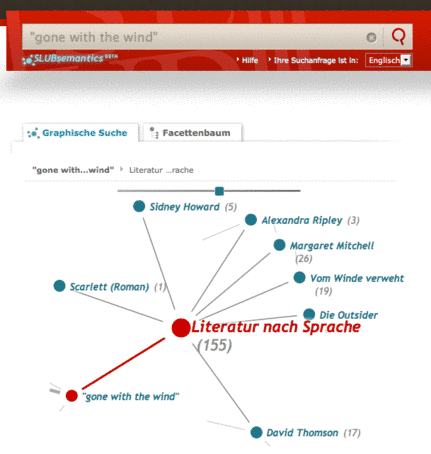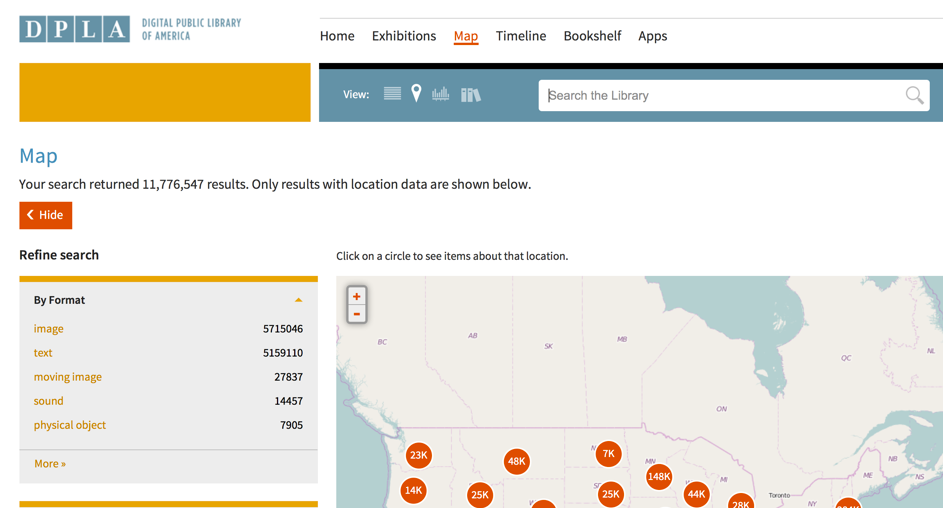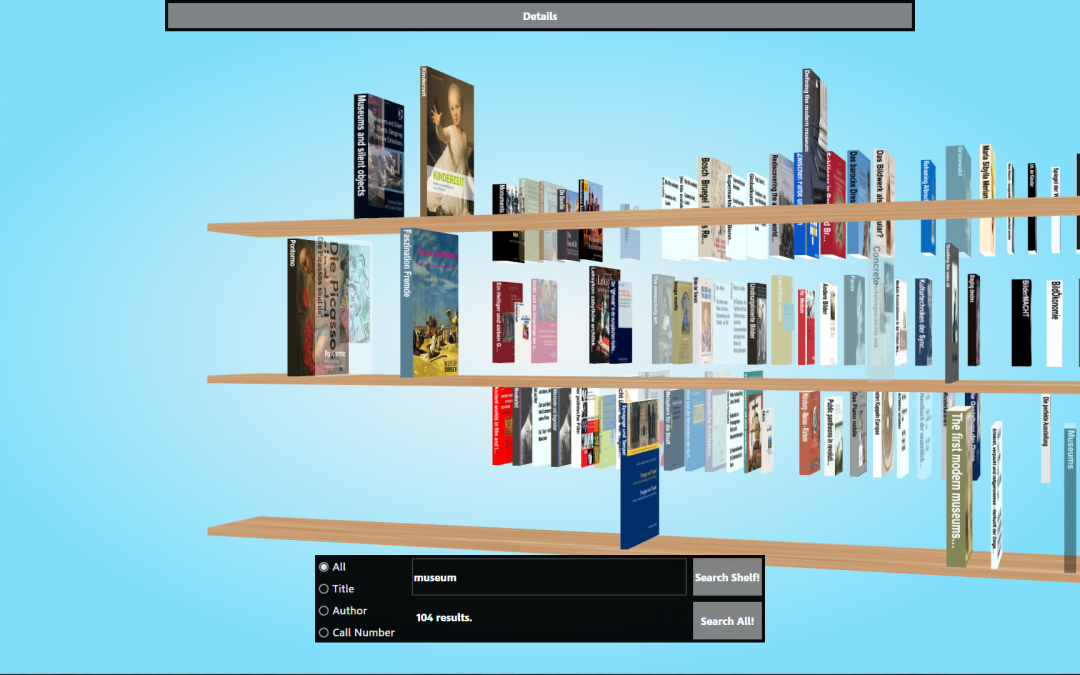Buzz word or tautology?
Description
The term “Smart Library” has recently been used more frequently, for labeling a vision of libraries of the future (examples see Fig. 1 and 2), in particular as part of the so called “Smart City” concept. This concept addresses the integration of digital processes and informational feedback loops in the public infrastructure and claims this integration to be a desirable state, in which cities become “smarter”, i.e. more efficiently organized, resource-friendly, flexible, sustainable, green, and socially inclusive. If this is to be a kind of “smooth space”, as is often connoted, or rather a highly “striated” (Deleuze&Guattari, 1993) and controlled one, this development is up for debate, and obviously not everybody is happy with it (see the graffito from Berlin-Kreuzberg in Fig. 3). In any case, we have to ask, what does it mean for libraries to be part of that development? What is their role? How should they act? And what does it mean for a library to be smart in the first place?

Fig. 1: Dokk1 Hovedbiblioteket

Processed with VSCOcam with hb2 preset
Fig. 2: DTU Ballerup Library, Denmark. Image © Olivier Martel Savoie, @une_olive

Fig. 3: Ben Kaden/Twitter 23.10.2017, edited
Although pilot projects (see here and here) and an international conference on this topic took place, there is no comprehensive definition. A general and common aspect of this term and related strategies is that they are used as answers to challenges, especially to questioning the very idea of a library. Libraries all over the world face this problem since this idea cannot be conceived under an economical framework. This is because libraries are (more or less) free and for everybody – obviously a rather communist concept. University or research libraries are part of an academic environment as providers of scientific literature and facilitators of scientific communication. Thus, they are dependent on, but also secured by larger institutions. Public libraries, however, have to face more of the political ignorance of communal institutions. It is no wonder that some public libraries choose to answer this by referring to principles of the “Smart City” like public participation, open government, or Citizen Science, and/or re-invent themselves as “third places” (Oldenburg, 1999), organizing cultural events and creating better environments for work and leisure.
The reason why both public and research libraries are increasingly questioned, is of course the advent of the world wide web and the new possibilities which “smart” devices create for access to digitally available information, seemingly without being dependent on a mediating institution. The challenge for libraries today lies exactly in taking part in this development without giving up their basic functions.
Given that technical developments are often used to get rid of non-commodified spaces, the reaction of librarians towards the concept of a “Smart Library” can indeed be skeptical. Isn’t the very idea of a library not already pretty smart? And did libraries not live up to this idea and the definition as a place of education, as a collector and provider of information? And will those functions not be necessary in the future? Who will provide for reliable material to “feed” the web?
The challenges libraries face are matters of intensive growth (Richta, 1967). While the old idea of a library has to be defended, libraries will have to think about new ways of mediation, new services, and new environments. Now it is possible to ask again what is “smart” for a library.
The term “smart” refers mainly to efficiency due to the use of technologies and to an automatization of processes to facilitate the working and everyday environment. In this sense it is part of the “scientific-technological revolution” and the associated “intensive growth”, described already by the Richta-Report in the 1960s. As “smart homes” promise to release life from the more “trivial” housework, in libraries book bots deal with less demanding tasks like returning, storing and also ordering items. While many librarians might feel relieved from those unpleasant tasks and are happy to focus on more sophisticated activities, the concern of becoming redundant or a general fear of “automatization” also arises. This is, however, just one part of the developments libraries has to deal with. Let us look more closely at “smart” strategies regarding other aspects.
Of course not every strategy works for every institution, and thus one of the basic approaches in this context is a thorough investigation and evaluation of the developmental goals. For example, the monitoring of trends published in the yearly Gartner’s Hype Cycle or the IFLA trend report is a crucial task for the libraries. Further sources are the ALA TechSource Blog and their website “Library of the Future” as well as conferences and trade fairs. Unfortunately, the only periodical report focusing on libraries the NMC Report will not be published anymore, but alternatives and ideas for a new library trend report are already discussed in the community (Schuldt, 2018)
In the following, some useful and innovative concepts regarding the use of physical space (flexibility and amenity value), digital strategy (including the useful application of technologies, digital media, and services), and cooperation (with users and other institutions) are presented.
Flexibility
Referring to the library as a physical space, flexibility in terms of functionality of space is the most crucial aspect. The space is supposed to be transferable and has to fit the actual use. The leading questions are: What function has this space? How can different functions be coordinated simultaneously? In Fig. 4 you see the Hunt Library of the North Carolina State University, which is part of the Triangle Research Libraries Network (TRLN). One of the main goals of this research project is to create flexible environments for working with digital tools and media. This includes the implementation of digital labs with software for different tasks, for instance statistics, mapping and visualization tools. The low arc-shaped shelves in Fig. 3 are supposed to build sound-insulated spaces, which can therefore be used for team meetings or events. Furthermore, these spaces can be assembled flexibly, according to the requirements of the event. Apart from the flexible use of furniture, the coloration and lighting concept gives the impression of a high level of amenity quality.

Fig. 4: Hunt Library. Image © Mark Herboth
Collaborative Working & Presentation
Also, intelligent furniture may facilitate collaborative working processes and offer innovative possibilities to make the library stock or digital cultural objects in general visible. Digital desks have become a common presentation tool for multimedia materials not only in libraries but also in museum spaces. In libraries, as an example of intelligent furniture, self-booking shelves operating with RFID gained popularity.
For working groups, the HCi Konstanz has developed several very innovative and useful tools, for instance the HuddleLamp. It is a desk lamp equipped with a camera which recognizes all mobile devices placed on the table and enables the transfer of the display content in an easy manner: Just by swiping (see Video). This tool is highly useful for ad hoc meetings.

Fig. 5: Blended Bookshelf
For the simultaneous presentation of analog and digital media, to enable a serendipitous browsing of the library stock, “Blended Shelf” offers a neat solution: In a graphical user interface, a virtual bookshelf is generated, which displays all library sources (printed and digital) in a homogenous design (see Fig. 5). In terms of design, skeuomorphism has been controversially discussed (see interaction-design.org). Hence in this virtual shelf the electronic books and papers are presented according to the search mode arranged either right beside the semantically similar printed books or by title and author. It has been further developed as “Hybrid Shelf” for a commercial 3D-visualization, while the code of an open source version is available via Github.
Visual Search
Digital documents and artifacts may semantically be organized according to the most elaborated data structures and the most up to date and accurate metadata standards, but may still be completely invisible for library users. Therefore, the visibility and in particular the mediation of digital media is the key to taking care of the informational needs of the users. There has been many attempts to offer searches which are more than simply text-based. A very neat visual and multilingual search was developed within the project SLUBsemantics of SLUB Dresden.

Fig. 6: SLUBsemantics
In Fig. 6 you see the interface with the search results using the graphical search option. The library data is enriched and structured by the Wikipedia categories. Hence, beside similar library media, also abstract concepts ordered by their relevance are displayed. This is a useful presentation for scientific research purposes, because it may enable the discovery of new relations. The second display option is a tree visualization with a classical hierarchic order of terms and subterms.

Fig. 7: DPLA Map search

Fig. 8: DPLA Color Search; Screenshots.
Map and Color searches have also become a common option, shown here in Fig. 7 and 8 for the DPLA (“Digital Public Library of America”) search interface. But the use of color searches particularly within text documents might be rare and sometimes misleading, because in this example (Fig. 8) the scan process obviously produced blue versions of the originals. As a search result for the color blue, those digitized documents might be not a very relevant result. Hence, color searches can be much better applied to non-textual cultural objects, in particular paintings.
Visualization
In general, visualization is a common and effective approach to make large amounts of heterogeneous data accessible. This refers to the popular concept of Big Data, meaning datasets which are too large, too complex or too unstructured to be processed (Snijders et al., 2017 and Gartners, 2011). Visualizations like diagrams facilitate the discovery of new contexts and therefore new information, in order to gain new knowledge. By displaying the whole context and all relations simultaneously (Freyberg, 2018), the reading and understanding of a large or very complex data set is enabled.

Fig. 9: DDB
In Fig. 9 we see a visualization of the DDB (“Deutsche Digitale Bibliothek”), created by the Urban Complexity Lab. The DDB contains over 7 million cultural heritage objects, which are displayed in an overview here. The objects can be explored by dates or categories. Depending on the timespan selected, the most popular search terms, locations and persons are different. Therefore, different dimensions to explore this huge dataset are offered in this visualization.

Fig. 10: DNB; Screenshot
An example of the visual access to the huge dataset of the German National Library (DNB) is illustrated in Fig. 10 (for further reading see Dörk, 2017). Beside a traditional search option offering access by year, topics, and persons, a timeline as well as a map of topics and their relations facilitates the exploration of the publications.
Openness
The annual award as the “Library of the Year” might also indicate which library in Germany has recently been particularly innovative or “smart”. The university library of Leipzig (UB Leipzig) was the winner of 2017. According to the decision committee, the main criterion for the award was the factor of openness (ub.uni-leipzig.de), with openness including different levels: On the one hand, the software provided for scientific research was completely Open Source, on the other hand, a very good infrastructure for Open Access publication was provided by the library. Hence, openness seems to be a crucial aspect of a “Smart Library” and is related to concepts like Open Governess which play a central role in the concept of a “Smart City”.
Conclusion
So what is a smart library? A definition does not exist yet, but as elaborated here, there are many strategies related to this concept. Even though the term is often used as a (self-) promotional catch phrase or buzzword, it designates more than just a label or a slick blinking surface.
The illustrated aspects and technologies may all be relevant for an innovative library and therefore be part of the concept of a “Smart Library”. In general, the use of technologies and innovative changes should be embodied in a comprehensive strategic concept that fits the local requirements of the staff and the users.
In conclusion, libraries as non-commercial providers of large amounts of up to date information might have been “smart” ever since they came into existence, because besides providing information, libraries had to manage progress at all times and renew themselves in a permanent process, which might make the term of a “Smart Library” even somewhat tautologic. The main functions of libraries stayed the same, but because of the tremendous rise of digitally available information and its relevance, new ways of mediation and services has to be created.
The facts that the definition of a library as a collector and provider of information did not fundamentally chance since ages and that libraries are the most visited cultural institutions (according to the “Deutsche Bibliotheksstatistik” approx. 220 million visitors in 2015) underline their necessity to exist.
Notice
In September, a book sprint on this topic will be held at the Next Library Conference in Berlin (LINK), and the next workshop on “Augmented Library in Bibliotheken” will take place on December 6th and 7th at TH Köln, both with Sabine Wolf.
Language editor: Evgeny Bobrov

